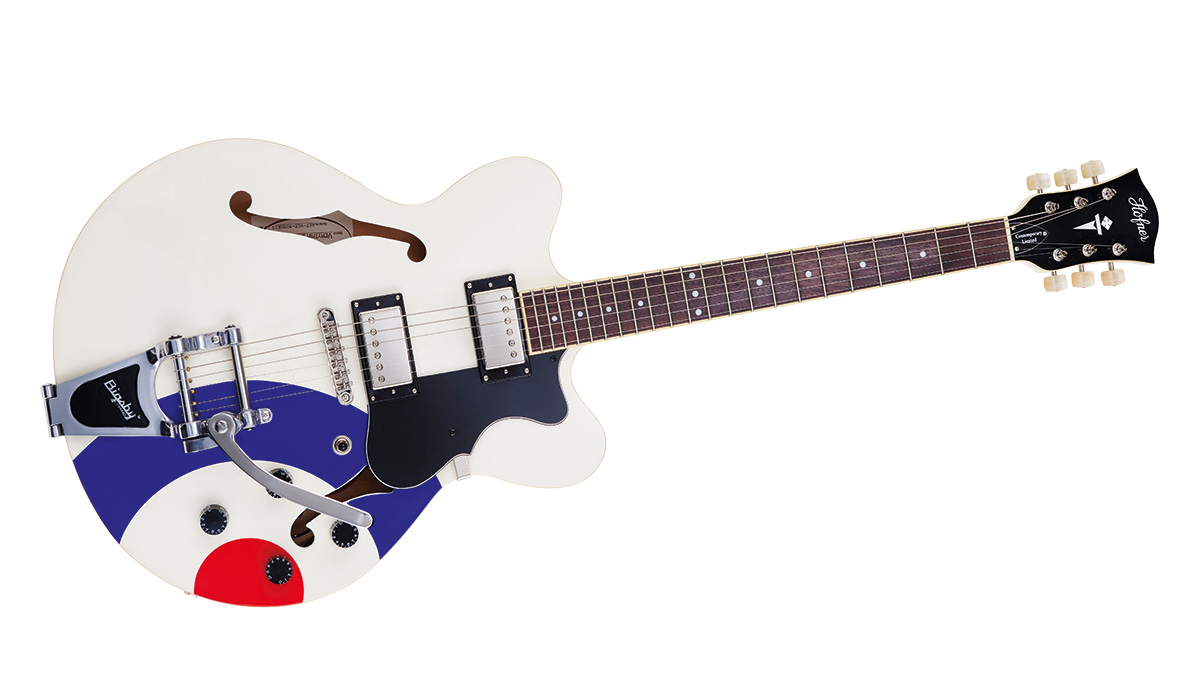MusicRadar Verdict
If Mod's your bag, baby, then this is for you.
Pros
- +
Licensed Bigsby vibrato. Great Brit pop tones.
Cons
- -
Non-Mods may be put off, obviously.
MusicRadar's got your back
Along with Lambretta scooters, Steve Marriott haircuts and scrapping with rockers on Brighton's seafront, the RAF roundel has come to define the 60s mod era and Britishness in general.
Originally seen on the wings of fighter planes, the red white and blue circles were famously adopted by mod gods such as The Who, and their followers, who sewed them onto their parkas.
Here, the iconic roundel sits upon the Verythin's laminated spruce top, which is allied to maple ply back and sides. The slim-profile, glued-in neck is a single piece of maple mated with a rosewood fingerboard, 22 medium frets and a set of machineheads with pearloid buttons.
This model comes with Höfner's own humbuckers. The four-control - Quadrophonic? - wiring is your classic two-volume, two-tone setup with a three-way pickup selector toggle switch.
The big news is that this guitar is fitted with a licensed Bigsby vibrato for some subtle note wobbling. Hardware is completed by a tune-o-matic bridge with roller saddles to reduce string drag and tuning problems.
In keeping with its intended audience, the Mod pumps out a vibrant crunch when you subject its bridge humbucker to overdrive. Think the Small Faces epic, Tin Soldier or Weller's tone on The Jam's In The City.
Crank the dirt up and you're in Oasis territory, while tonal versatility is maintained by the bluesier response of the middle and neck notches.
Some might say anyone can play this beautifully made guitar, but the Mod is obviously targeted at fans of 60s British power-pop and later icons like Paul Weller, and later still, Oasis.

"I believe I’ve got the last recording Jeff Beck ever did in the studios": Guitarist Mick Rogers thinks he's in possession of a piece of musical history

“If you want a good vocal, you gotta drink snake sperm”: Singer Jessica Simpson reveals the unusual drink that keeps her vocal cords in tip-top condition

“I was thinking at the time, if anyone wants to try and copy this video, good luck to them!”: How ’60s soul music, African rhythms and a groundbreaking video fuelled Peter Gabriel’s biggest hit










